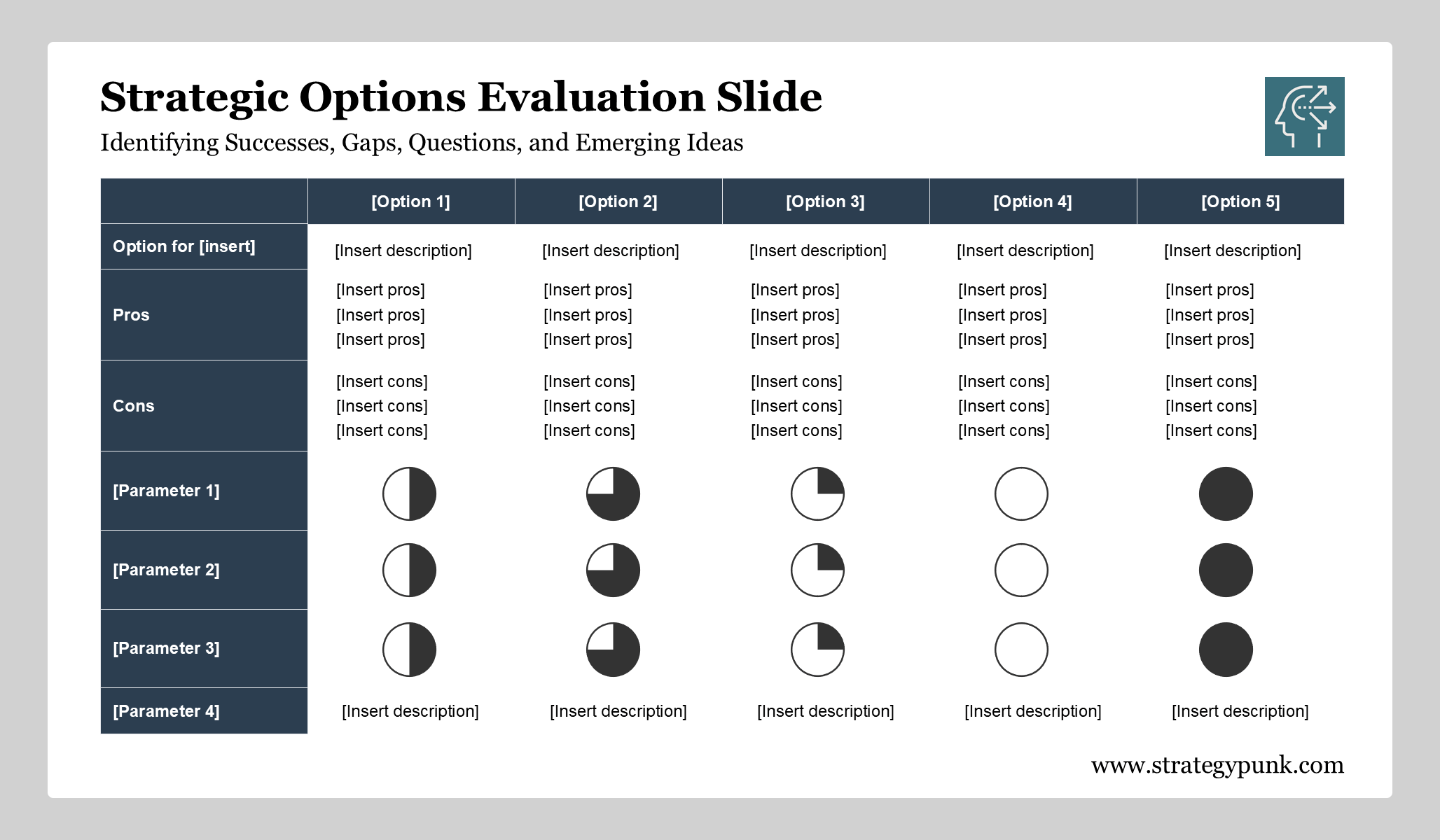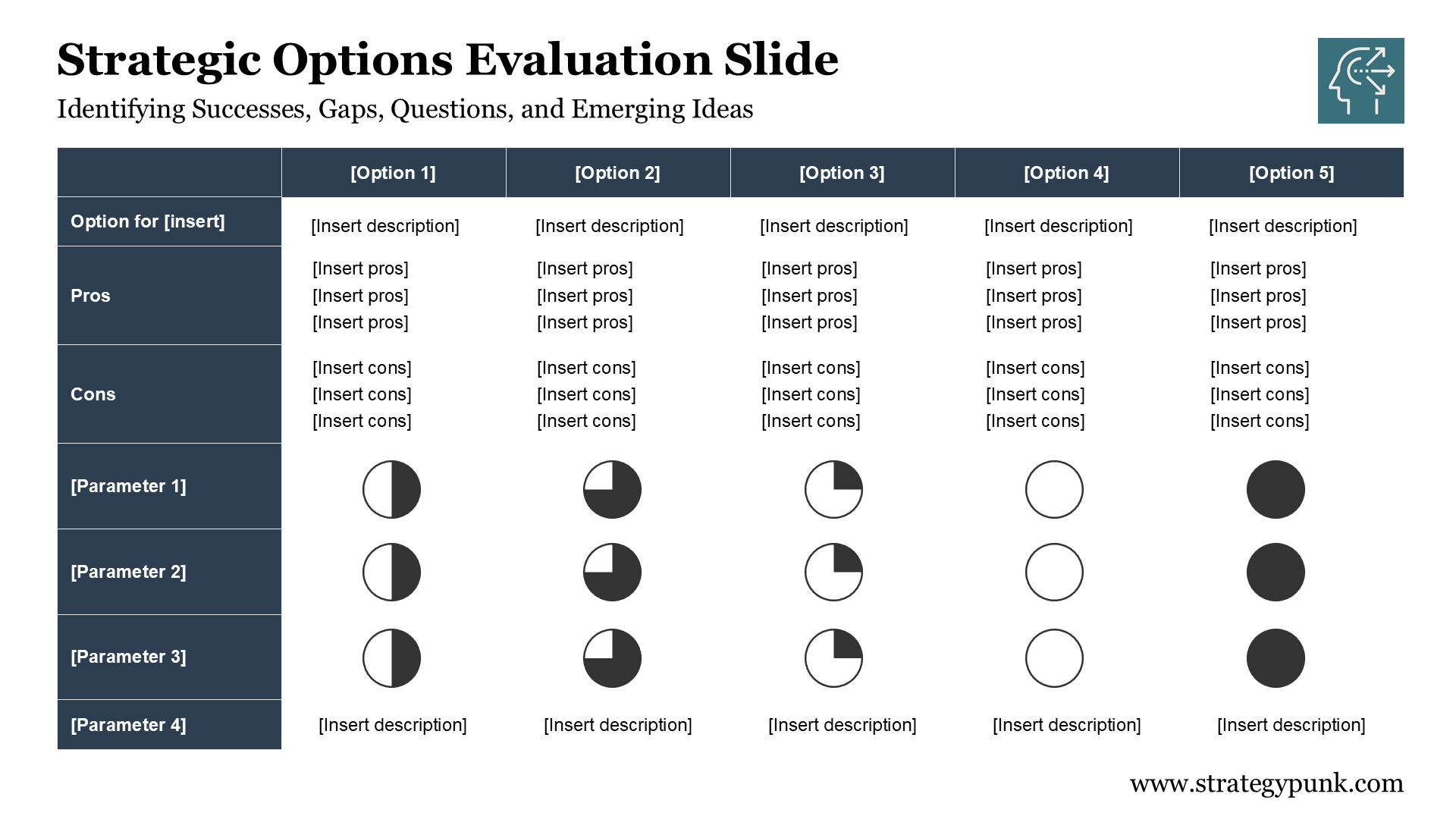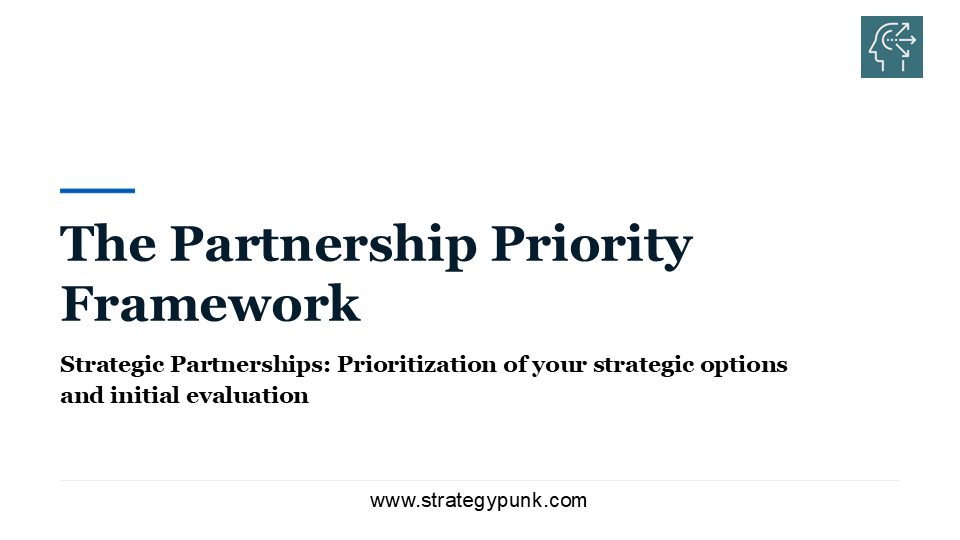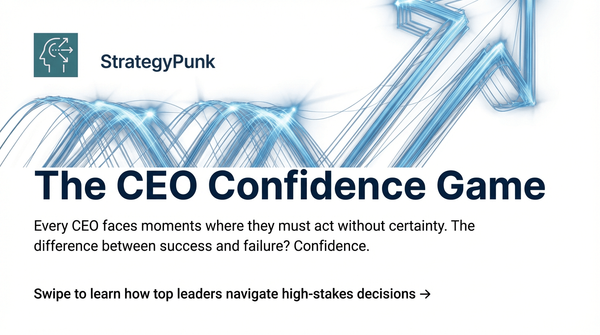Free PPT: The Strategic Options Evaluation Framework
Stop making bad strategic decisions by gut feeling. Get our free PPT template that turns chaos into clear, systematic choice evaluation.

Ever feel like you're drowning in options?
You're not alone. Whether you're deciding which startup to join, which project to tackle first, or which direction to take your career, the sheer number of choices can be paralyzing.
Here's the thing: most people make strategic decisions with their gut, a messy whiteboard session, or whoever speaks the loudest in the room. But what if there was a better way?
Today, I'm sharing a game-changing framework that transforms chaotic decision-making into a transparent and visual process.
It's called the Strategic Options Evaluation Framework, and it's about to become your new best friend.
Why Most People Suck at Making Decisions
Let's be honest – we're all winging it most of the time.
You probably know the feeling: you're in a meeting, everyone's throwing out ideas, and somehow you end up choosing the option that sounds the least terrible. Or maybe you go with whatever your boss suggests because, well, they're the boss.
This approach is broken.
It leads to regret, second-guessing, and that nagging feeling that you might have missed something important. The problem isn't that you're bad at making decisions – it's that you don't have a system.
The Framework That Works
The Strategic Options Evaluation Framework is remarkably simple: you take up to five options, lay them out side by side, and compare them systematically using a structured template. That's it. No complicated algorithms, no MBA-level jargon, just a straightforward way to think through your choices.
Think of it as a head-to-head comparison, but for strategic decisions. Just as you compare phones by looking at specs, price, and features side by side, this framework lets you compare strategic options using criteria that actually matter to you.
Here's what makes it work:
It forces you to be specific. Instead of vague ideas like "grow faster" or "improve efficiency," you have to define exactly what each option means. This alone eliminates half the confusion that derails most decisions.
It makes trade-offs visible. Every option has pros and cons. The framework ensures that you see both sides clearly, so you're not blindsided by problems you could have anticipated.
It keeps everyone honest. When everything is laid out visually, it's harder for office politics or personal biases to hijack the conversation. The focus stays on what matters.
It creates a permanent record. Unlike whiteboard sessions that get erased, this framework documents your reasoning. You can revisit it later, learn from it, and improve your decision-making over time.
The Secret Sauce: Custom Parameters That Matter
Here's where the framework gets powerful. Instead of using generic criteria like "good" or "bad," you define four custom parameters that are relevant to your specific situation.
These parameters become your scoring criteria – think of them as the "specs" you're comparing each option against. The framework provides space for four parameters, as research indicates that this is the optimal number for meaningful comparison without overwhelming complexity.
For startup founders deciding on growth strategies:
- Time to revenue (0-10 scale)
- Resource requirements (0-10 scale)
- Market size potential (0-10 scale)
- Competitive advantage (0-10 scale)
For product managers prioritizing features:
- User impact (0-10 scale)
- Development effort (0-10 scale)
- Revenue potential (0-10 scale)
- Strategic alignment (0-10 scale)
The beauty is that these parameters are entirely up to you. They reflect what you care about, not what some business school textbook says you should care about. This customization is what makes the framework universally applicable, whether you're making career decisions, business strategy choices, or even personal life decisions.
Why This Framework Helps
Using this framework doesn't just help you make better decisions – it fundamentally changes how you approach decision-making. Here's what happens when you start using it consistently:
You become more intentional. Instead of reacting to the first option that sounds good, you force yourself to explore alternatives and think through implications systematically.
You get better at explaining your reasoning. When someone asks, "Why did you choose that?" you can walk them through your exact thought process. This builds trust and makes you more persuasive.
You reduce decision regret. Because you've thoroughly considered the pros and cons upfront, you're less likely to second-guess yourself later. You know you did your homework.
You build institutional knowledge. When you document your decision-making process, you can revisit it months later and understand your reasoning. This helps you learn from both good and bad decisions.
You save time in the long run. While it takes a bit more time upfront, structured decision-making prevents endless back-and-forth discussions and reduces the need to revisit decisions later.
The framework is practical because it aligns with how our brains naturally process complex information. Instead of trying to juggle multiple variables in your head, you externalize the process and make it visual. This reduces cognitive load and helps you see patterns you might otherwise miss.
How to Use This Framework
Don't overthink it.
Here's the simple 5-step process:
Step 1: List Your Options (2-5 max) Write down your realistic alternatives. Be specific about what each one means. Instead of "Job A" and "Job B," write "Senior Developer at TechCorp" and "Lead Engineer at StartupX."
Step 2: Define Your Parameters. Pick the 4 criteria that matter most for this decision. Make them measurable if possible. Think about what success looks like for this particular choice.
Step 3: Fill in Descriptions. For each option, write a brief description that captures the essence of what this choice means. Keep it to 1-2 sentences.
Step 4: List Pros and Cons. For each option, identify 2-3 major advantages and 2-3 major disadvantages. Don't just think about obvious stuff – consider second-order effects, hidden costs, and long-term implications.
Step 5: Score Each Parameter Rate how well each option performs on your custom criteria using a 1-10 scale. The numbers don't decide for you, but they help you see patterns and trade-offs you might have missed.
Step 6: Step Back and Decide. Look at the complete picture. Which option has the best combination of pros and parameter scores? Which cons are you most comfortable accepting? The framework presents the facts – your judgment makes the final decision.
The Bottom Line
Good decisions aren't about having perfect information or predicting the future; they're about making informed choices. They're about having a systematic way to think through your options and make the best choice with the information you have.
The Strategic Options Evaluation Framework gives you that system. It's simple enough to use in a coffee shop conversation but rigorous enough for board presentations. Most importantly, it helps you feel confident that you've done your homework before making the call.
Stop making decisions by committee, gut feeling, or whoever talks the loudest. Start using a framework that works – and watch how it transforms not just your choices, but your entire approach to strategic thinking.
The template is free, the framework is simple, and the results speak for themselves.
The only question is: what decision will you tackle first?
Get the Free PowerPoint Template That Makes This Easy
Ready to stop making decisions by committee or gut feeling? I've created a professional PowerPoint template that implements this entire framework. It's the same template I use for client work and strategic planning sessions.
The template is designed to be presentation-ready, allowing you to use it in team meetings, board presentations, or for your decision-making process. Best of all, it's completely free.

What's in the template:
✅ Clean, professional layout that works great in presentations
✅ Space for 5 strategic options with clear column structure
✅ Pre-built sections for option descriptions, pros, cons, and scoring
✅ 4 customizable parameter rows you can adapt to any decision
✅ Consistent formatting that looks great in any business setting
✅ Easy to customize – just replace the placeholder text with your content
✅ Works with PowerPoint 2016+ and Google Slides
Perfect for:
- Business strategy choices (market entry, product development, growth strategies)
- Team workshops (getting alignment on project direction)
- Client presentations (showing structured analysis and recommendations)
- Personal decisions (major life choices, investment options)
- Academic projects (research directions, thesis topics)
How to use it:
- Download the template using the link below
- Replace the placeholder text with your specific options and criteria
- Customize the 4 parameters to match your decision context
- Fill in descriptions, pros, cons, and scores for each option
- Present your analysis or use it for personal reflection
💻 Format: Microsoft PowerPoint (.pptx)
✅ Compatibility: PowerPoint 2016+, Google Slides, Keynote,
💰 Price: Free
Questions about the framework? Want to share how you're using it? Join our LinkedIn community.





